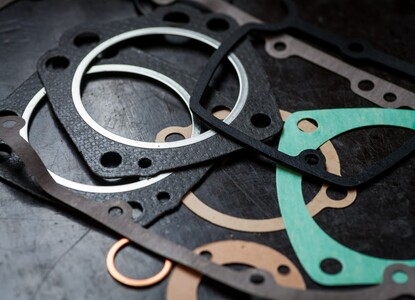
Types of Gaskets and Their Applications
1. Rubber Gaskets
- Rubber gaskets are plausible because of their flexibility and are mostly used for sealing where there is exposure to water, oils and chemicals. They are used in plumbing, automotive, and HVAC systems due to their excellent sealing properties and durability. Other examples of rubber gaskets are neoprene, nitrile, silicone, and EPDM.
2. Metal Gaskets
- These metal gaskets are used in oil and gas, power plants, and heavy machinery due to extremely high temperatures, pressures, or both. To enable dependable sealing in these applications Spiral wound gaskets, Ring-joint gaskets, and Corrugated metal gaskets are also used.
3. Non-Metallic Gaskets
- Flexibility as well as non-contamination makes Non-metallic gaskets appropriate for use in pharmaceuticals, and food processing industries. These gaskets made of PTFE, Teflon, graphite, and compressed fibre can work efficiently in highly corrosive areas.
4. Composite Gaskets
- Different materials can be put together to form composite gaskets for increased resilience in harsh conditions. These gaskets are particularly advantageous for high temperature, pressure, and chemical exposure.
5. Unparalleled Gasket Performance
- Gasket selection is fundamental when tailoring equipment to meet performance and reliability specifications. Advanced engineering analysis is best conducted alongside analysis of system control, diagnostics, and health management. We recommend creating a holistic engineering and design framework that includes system requirements, environmental conditions, and stress estimations.







